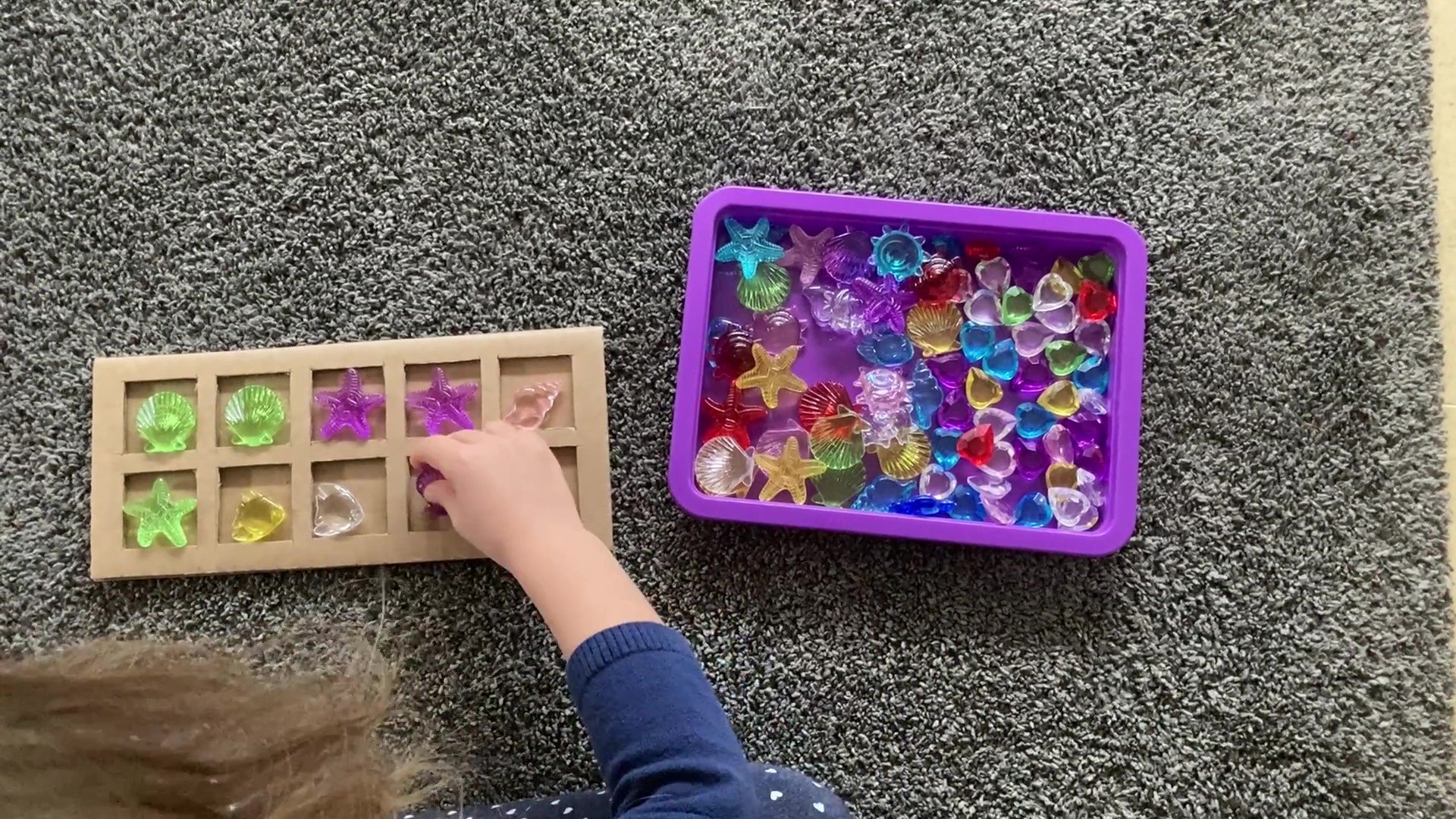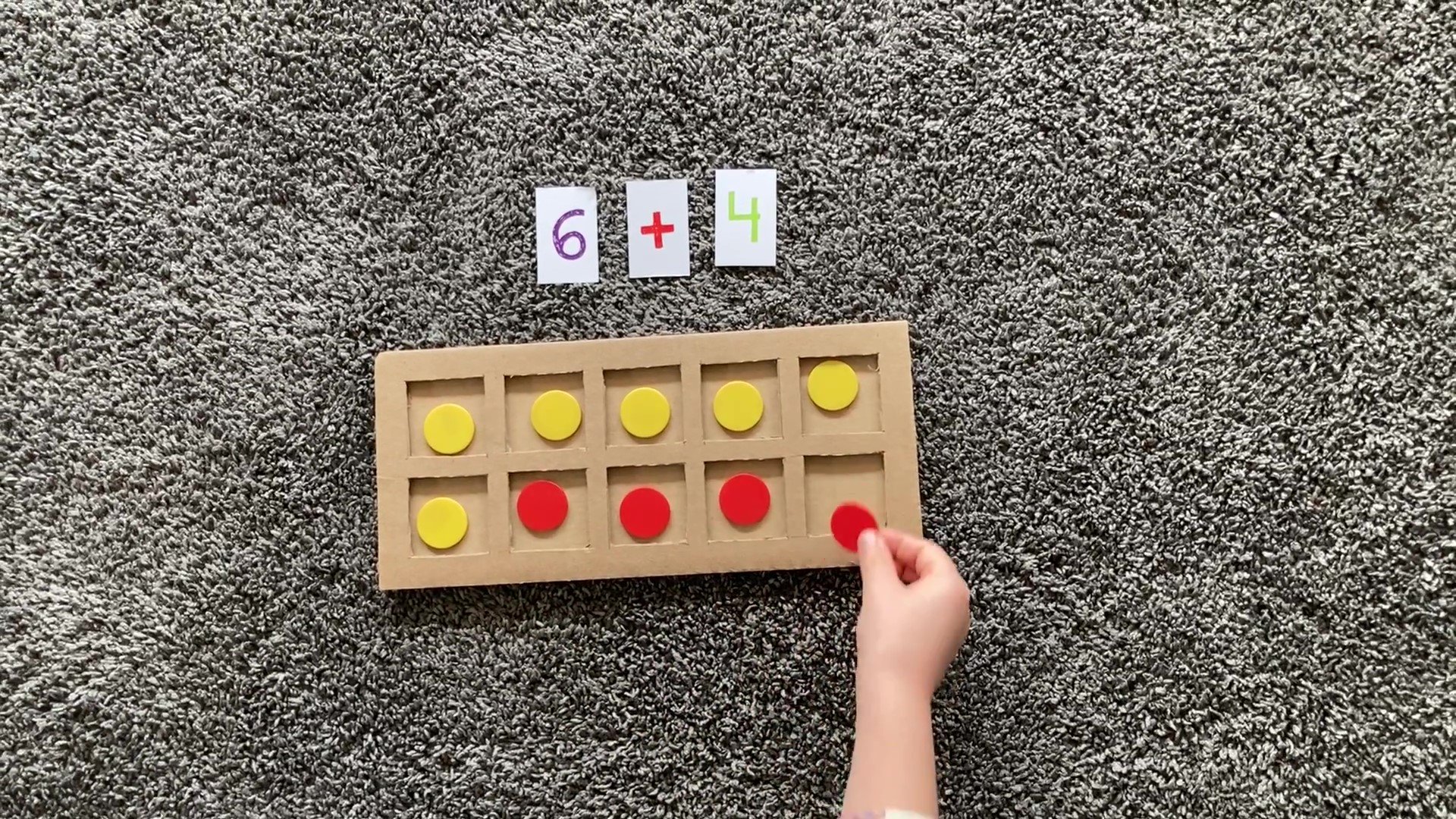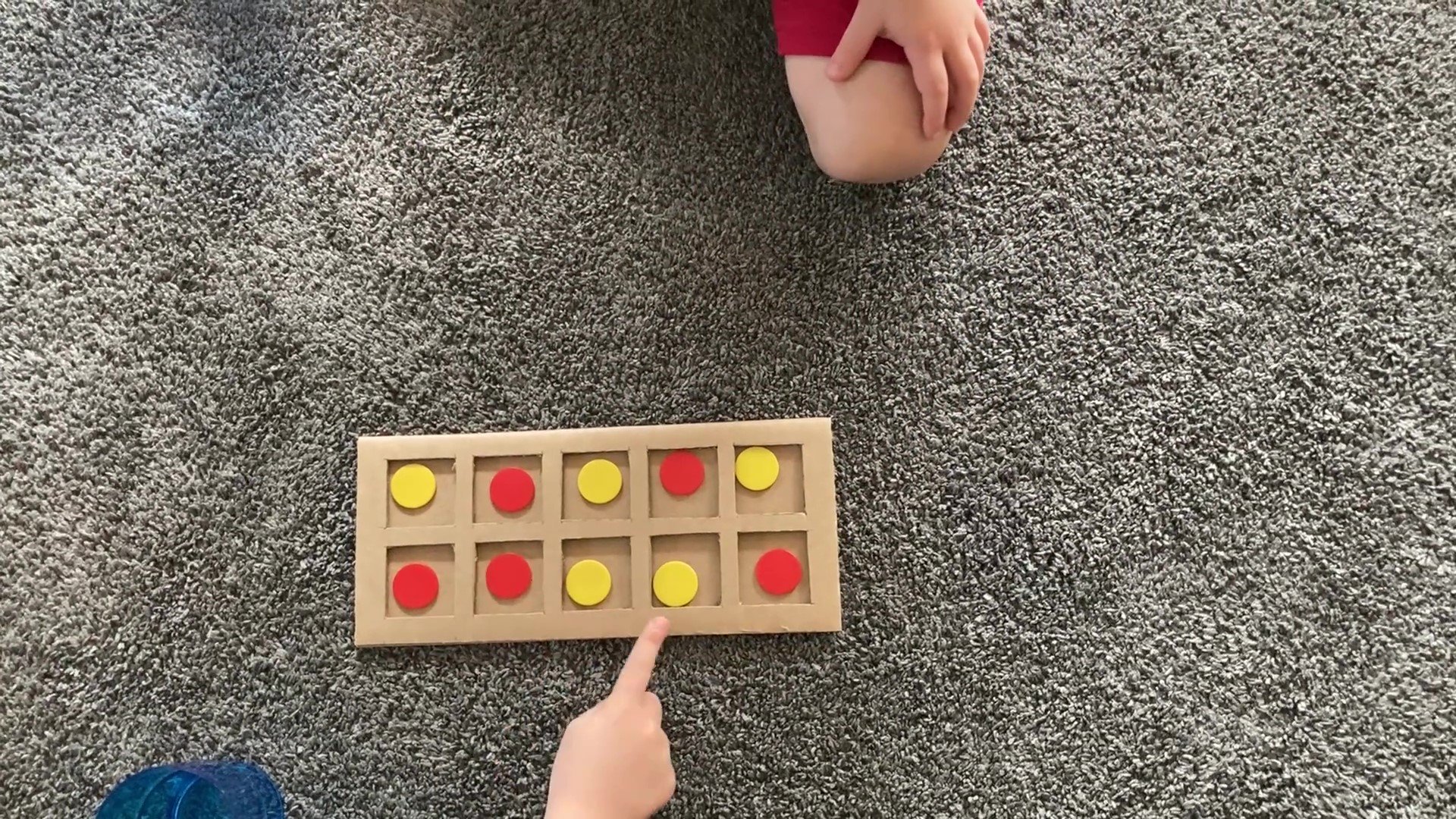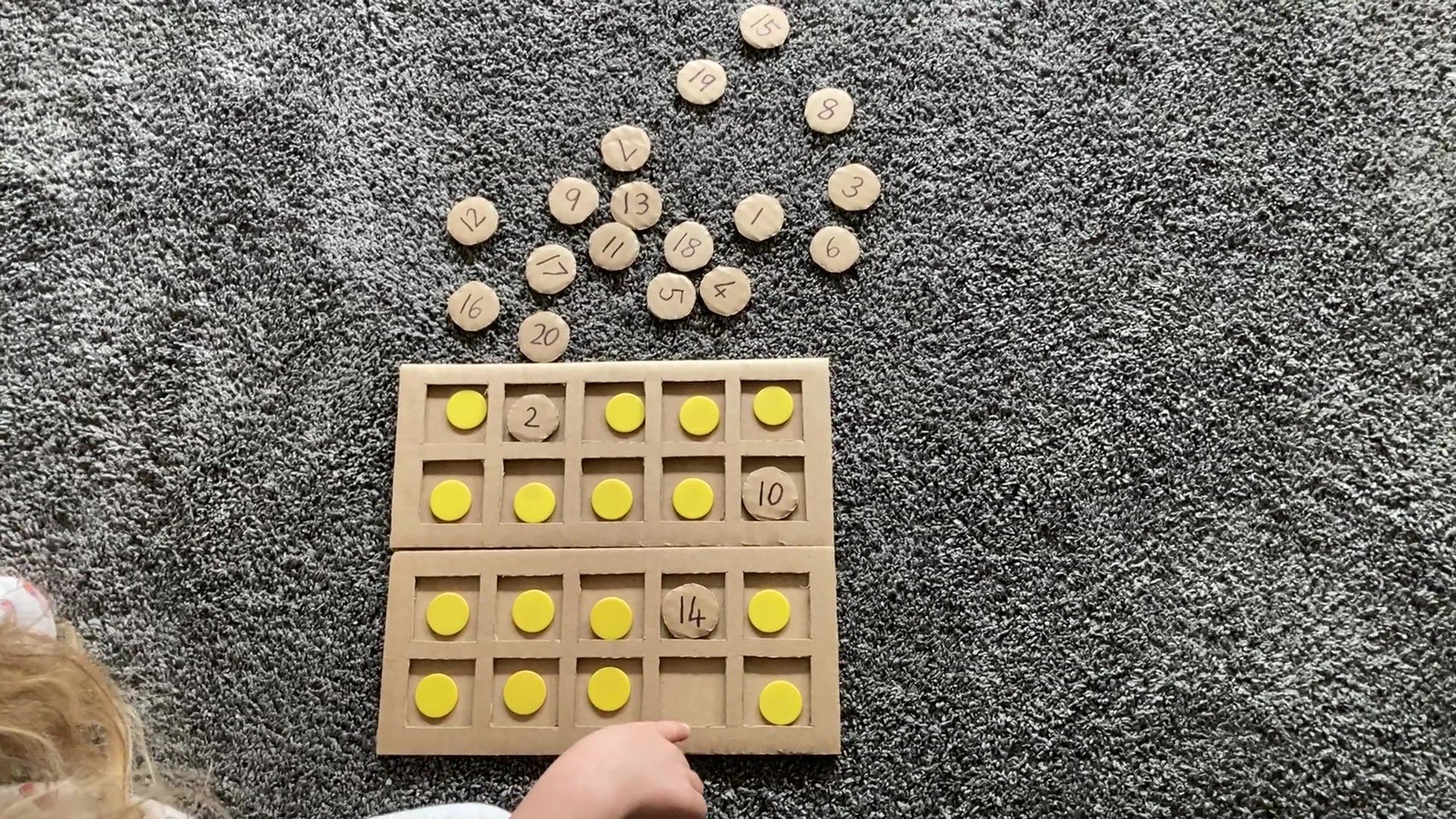10 Fun Ideas for Using a Maths Tens Frame - Early Maths
Understanding what numbers represent is an important step in children developing number concepts. A tens frame is a great way for children to see numbers and later visualise these frames in their heads. We designed a cardboard tens frame that can be used to help with identifying numbers, ordering them, adding them and so much more. Seeing the number represented in this frame should help children understand the concept that numbers have meaning. Take it a step further and use the frame to combine two numbers to make ten by using different coloured counters. This resource is also great for learning about and comparing patterns. Of course, we do suggest using loose parts as another option for a different experience. Once objects are put in the squares of the frame, they don’t move around easily which is an added bonus! To see the ideas in action and to see how easy it is to make this tens frame, watch our video (how to make it in the second half).
Check out the 10 ideas to use a cardboard tens frame below.
1. Counting
Children can simply place an object in each square and count how many are there. This is great for number exploration and seeing how numbers create patterns of fives and tens. You can use one tens frame for this or add more to make larger numbers.
2. Ordering numbers forwards
This simple idea is made using the spare pieces of cardboard that were cut out. Make them into circles and draw numbers on them with a marker. The circle shape makes them easier than squares to get in and out of the tens frame. Children can have all the number counters and place them in the correct order inside the tens frame. Children can order numbers up to 5, 10 and 20 (if two frames are used).
3. Ordering numbers backwards
Knowing the order of numbers both backwards and forwards helps children recognise numbers before and after which is useful for maths addition and subtraction. Ordering backwards is often more of a challenge! Children can use the cardboard number circles to order numbers backwards from 5, 10 or 20 (20 will require 2 frames).
4. Pick a number and make it
Another way to show what numbers mean is to pick a number and make it in the tens frame. This will help children match the numeral with the image of the tens frame for number representation.
5. Add numbers to ten or twenty
An excellent way for children to visualise addition families to 10 and 20 is to make them in a tens frame. Using double-sided counters works really well to show what 6 + 4 looks like in two different colours and the positions in the tens frame.
6. Count and match numbers using materials
Match and count materials in a tens frame
7. Compare numbers in a tens frame with a game
Children can play this simple game to learn to compare numbers and recognise families of numbers to 5 and 10. Give children a cup each with 5 or 10 double-sided counters in each cup. Have them shake the cups and tip them out and place their counters carefully in the tens frame on opposite ends and not changing the colour that the counters fell. Then they can compare their numbers, how many yellow and red did each person get, that means 2 yellow plus 3 red equals 5. This nifty little game opens up the opportunity for lots of maths talk.
8. Find odd numbers (or even numbers)
Tens frames can also be useful for exploring odd numbers and even numbers. Children can use counters and remove the odd number counters or turn them over to show the identification. They could also use cardboard number circles instead of counters. Children can identify odd or even numbers using one tens frame or two tens frames to make 20 numbers.
9. Find the missing numbers
Another great number identification idea for children to explore either numbers to 10 or numbers to 20. Place counters in the tens frame but remove a few. Children must then try to find the right number circle to place in the empty tens frame square. To make this idea slightly easier, you could use the cardboard number circles and remove a few instead of using counters.
10. Make a pattern
Bring out your beads, bottle lids, pom poms and other loose parts and let children explore creating repeating patterns using the tens frames. Making, explaining and understanding patterns can be lots of fun with the cardboard tens frame. The cut-out squares allow the loose parts to stay put enough to carry and show your pattern.
Those are our 10 ideas for using a maths tens frame. I’m sure there are many more ways you can use this easy-to-make cardboard resource.
Happy playing!

















